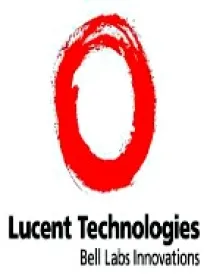In another chapter of the long saga of the Lucent Technologies, Inc. v. Microsoft litigation, the U.S.
District Court for Southern District of California (Judge Huff) (Case No. 07-CV-2000) in July granted in part and denied in part Microsoft’s motion in limine challenging Lucent’s supplemental expert report on damages. The opinion can be found at Lucent Techs., Inc. v. Microsoft Corp., 2011 WL 2728317 (July 13, 2011). The district court excluded the opinions of Lucent’s damages expert to the extent they were based on the entire market value of the accused software products. However, the district court stated it would revisit this ruling at trial if Lucent meaningfully apportions the per-unit price of the accused product.
Background
Lucent sued Gateway alleging infringement of “the Day patent,” which the Federal Circuit has described as “generally directed to a method for entering information into fields on a computer screen without using a keyboard.” Microsoft voluntarily joined the lawsuit and a jury trial was held in the U.S. District Court for the Southern District of California. At trial, Lucent alleged that four Microsoft products indirectly infringed the Day patent. Lucent sought reasonable royalty damages of $561.9 million “based on an 8% royalty [on sales of] the accused software products” and Microsoft countered that “a lumpsum payment of $6.5 million” adequately compensated Lucent. The jury returned a verdict awarding Lucent a lump-sum royalty payment of more than $350 million dollars. Microsoft appealed, arguing that the verdict was based on an improper application of the entire market value rule and was not supported by “substantial evidence.” On September 11, 2009, the Federal Circuit issued its opinion in Lucent Techs. v. Gateway, Inc., 580 F.3d 1301, vacating the $350 million dollar award against Microsoft and remanding for a new trial solely on the issue of damages because it found that the original verdict was not supported by substantial evidence.
Valuation of Damages
Upon remand to the district court, the parties submitted new damages reports in light of the Federal
Circuit’s opinion. On December 7, 2010, each of the parties filed motions in limine to challenge the
damages report of the other party. However, while the district court was considering these motions, the Federal Circuit issued its opinion in Uniloc USA, Inc. v. Microsoft Corp., 632 F.3d 1292 (Fed. Cir. 2011).
In Uniloc, the Federal Circuit clarified that to be able to use the entire market value of the product, it is not enough to simply assert a low enough royalty rate without showing that the patented feature is the basis—or a substantial basis—for consumer demand. See Uniloc, 632 F.3d at 1319–20. Accordingly, the Federal Circuit rejected the argument that “the base used in a running royalty calculation can always be the value of the entire commercial embodiment, as long as the magnitude of the rate is within an acceptable range as determined by the evidence.” See Lucent Techs., Inc. v. Gateway, Inc., 580 F.3d 1301, 1338–39 (Fed. Cir. 2009). If the patentee cannot meet the test for the entire market value rule, then “the patentee . . . must in every case give evidence tending to separate or apportion the defendant’s profits and the patentee’s damages between the patented feature and the unpatented features.” Uniloc, 632 F.3d at 1318. In other words, unless a party satisfies the entire market value test, a patentee seeking damages for a component cannot use the entire market value of the larger product as a royalty base.
In light of the Uniloc opinion, the district court permitted the parties to update their damages experts’
reports. On May 13, 2011, after the parties submitted their revised experts’ reports in light of the Uniloc decision, the parties filed another set of motions in limine challenging the damages reports of each party. On June 16, 2011, the district court issued an order denying in part and granting in part the motions. In its order regarding Lucent’s damage calculations, the court stated that “[i]n summary, the Court concludes that Lucent fails to properly apportion its damages calculation to separate between the patented features and unpatented features of Microsoft Outlook. Lucent must perform an additional apportionment in order to introduce a proper royalty base for its damages calculation or meet the three factored test for the entire market value rule if it seeks to use all revenue from infringing copies of Outlook as its base.” On June 23, 2011, Lucent’s damages expert supplied his supplemental expert report. Microsoft again brought a motion in limine to challenge the Lucent expert’s supplemental report in violation of Daubert and the entire market value rule.
The district court noted that “[t]he entire market value rule allows a patentee to assess damages based on the entire market value of the accused product only where the patented feature creates the ‘basis for customer demand’ or ‘substantially create[s] the value of the component parts,’” Uniloc, 632 F.3d at 1318, or where the patented feature was of “such paramount importance that it substantially created the value of the component parts,” Rite-Hite Corp. v. Kelley Co., 56 F.3d 1538, 1549 (Fed. Cir. 1995). Microsoft alleged that Lucent’s supplemental expert report still failed to properly apportion. The district court agreed with Lucent. Lucent’s supplemental damages report purports to do a per-unit analysis rather than basing the analysis on the entire product revenue. Nevertheless, the district court stressed that unless the patentee can show that the component was the basis or a substantial basis for consumer demand, then “the patentee . . . must in every case give evidence tending to separate or apportion the defendant’s profits and the patentee’s damages between the patented feature and the unpatented features.” Uniloc, 632 F.3d at 1318.
The district court found that Lucent’s per-unit analysis still relied solely on the whole per unit price of
Outlook—$67.39—without apportioning this to account for all the other unpatented features that
consumers use besides the Day patent technology even when consumers invoke the Day patent methods. Lucent contented that it should be allowed to introduce the entire market value of Outlook because such consideration is rooted in Microsoft’s license practices. The district court, however, noted that while these licenses may be relevant to several of the Georgia-Pacific factors used to determine a reasonable royalty, Lucent still needed to further apportion by some measure to separate between the patented and unpatented features, as tied to the facts of the case and economic realities. The district court concluded that Lucent had failed to apportion by any further measure, and therefore excluded portions of Lucent’s damages expert’s report for failure to apportion.






 />i
/>i

